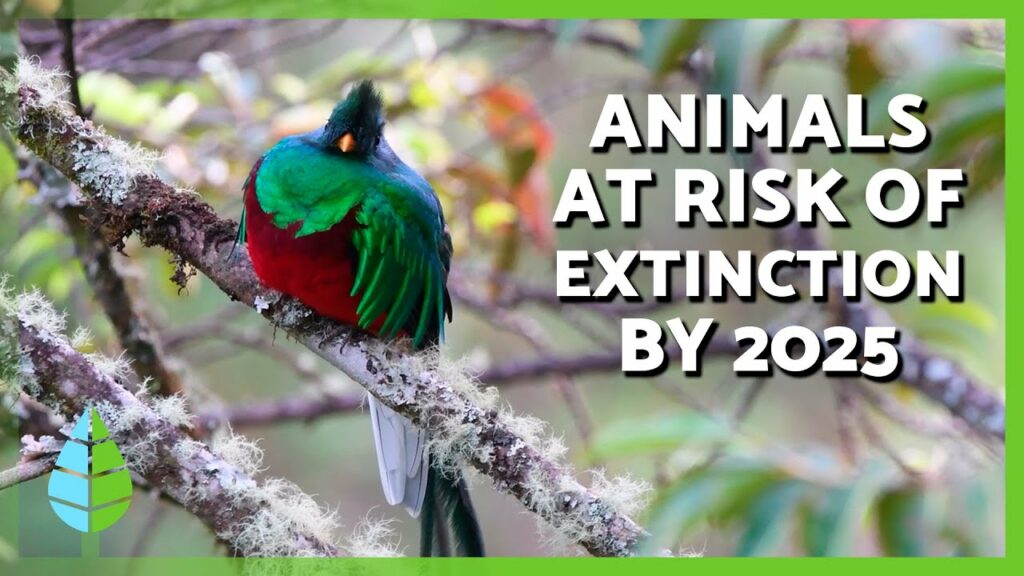In 2025, numerous animal species around the world face a high risk of extinction, a crisis driven by human activities. The International Union for Conservation of Nature (IUCN) Red List is the most comprehensive global authority on the conservation status of species, and as of December 2023, it listed 9,760 species as critically endangered.
Here are some of the animals on the brink of extinction and the major threats they face:
Critically Endangered Species
- Vaquita: The world’s smallest and most endangered porpoise, the vaquita is listed as critically endangered due to entanglement in illegal fishing nets in the Gulf of California.
- Amur Leopard: One of the rarest big cats, the Amur leopard population is extremely small, with only about 130 individuals remaining. Their primary threats include poaching and habitat loss.
- Black Rhino: While conservation efforts have led to a population increase in some areas, the black rhino remains critically endangered. Poaching for their horns continues to be a major threat.
- Orangutans: All three species—the Sumatran, Bornean, and Tapanuli orangutans—are critically endangered. They are threatened by habitat loss due to deforestation for palm oil plantations and the illegal pet trade.
- Javan Rhino: With a population of only around 76 individuals, the Javan rhino is one of the rarest large mammals on Earth. Habitat loss and poaching are the main threats.
- African Forest Elephant: This distinct species has seen its population decline by over 86% in the last 31 years, primarily due to poaching for ivory and habitat loss.
- Gharial: This critically endangered crocodile species from India is threatened by habitat loss, pollution, and entanglement in fishing nets.
- Red Wolf: Considered the most endangered wolf in the world, the red wolf population is now critically low due to habitat loss, vehicle collisions, and hybridization with coyotes.
Other Endangered Species
- Tigers: While the global population of wild tigers has increased, they are still considered endangered. They face threats from habitat fragmentation, poaching, and human-wildlife conflict.
- African Elephants: Both the savanna and forest elephants are listed as endangered or critically endangered. They are at risk from habitat loss, fragmentation, and poaching.
- Mountain Lions (Pumas or Cougars): Despite a wide range, they face increasing threats from habitat loss, which leads to inbreeding, and vehicle collisions.
- Chimpanzees: Our closest relatives are classified as endangered, with fewer than 250,000 remaining in the wild. Threats include the bushmeat trade, disease, and habitat loss from agriculture and logging.
- North Atlantic Right Whale: This species is critically endangered, with a declining population primarily due to vessel strikes and entanglement in fishing gear.
Major Causes of Extinction
The current extinction crisis is largely a result of human activities. The main drivers include:
- Habitat Loss and Fragmentation: As human populations grow, natural landscapes are converted for agriculture, urbanization, and infrastructure, destroying the homes of countless species and isolating remaining populations.
- Poaching and Illegal Wildlife Trade: The black market for animal parts, such as rhino horn, elephant ivory, and tiger bones, drives the hunting of endangered species to the brink of extinction.
- Climate Change: Rising global temperatures, shifting weather patterns, and rising sea levels disrupt ecosystems and alter habitats, making it difficult for many species to survive.
- Pollution: Toxins, plastics, and other pollutants contaminate air, water, and soil, poisoning animals and disrupting food chains.
- Invasive Species: The introduction of non-native species can outcompete native wildlife for resources, prey on them, or introduce new diseases, leading to population decline.
Conservation Efforts
Conservation organizations, governments, and local communities are working to protect endangered animals through various initiatives:
- Habitat Preservation: Creating and protecting national parks, wildlife reserves, and other protected areas is crucial for providing safe habitats.
- Anti-Poaching Measures: Increased patrols, advanced surveillance technology, and community-based programs are helping to combat the illegal wildlife trade.
- Breeding Programs and Reintroduction: Captive breeding programs help to increase the population of critically endangered species, with the ultimate goal of reintroducing them to the wild. The reintroduction of the California condor and the black-footed ferret are notable success stories.
- Rewilding: An innovative approach that focuses on restoring natural ecological processes by reintroducing key species, including both predators and prey, to help re-establish a balanced ecosystem.
- Legislative Protection: Laws like the Endangered Species Act in the U.S. provide legal protection to species at risk of extinction.
